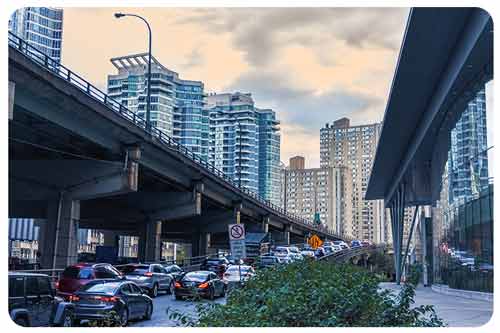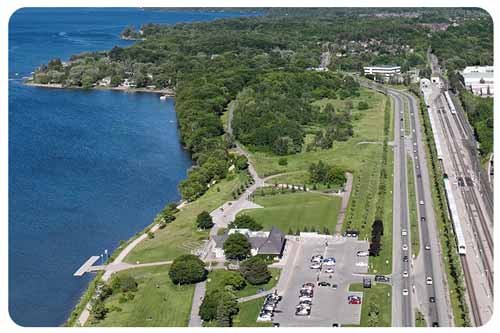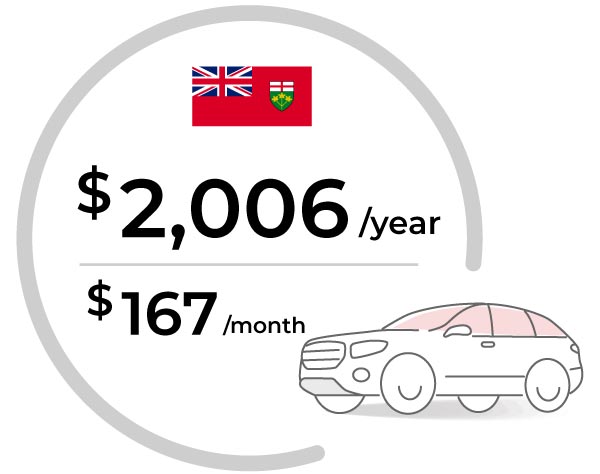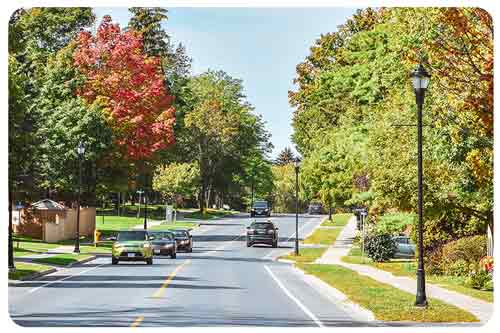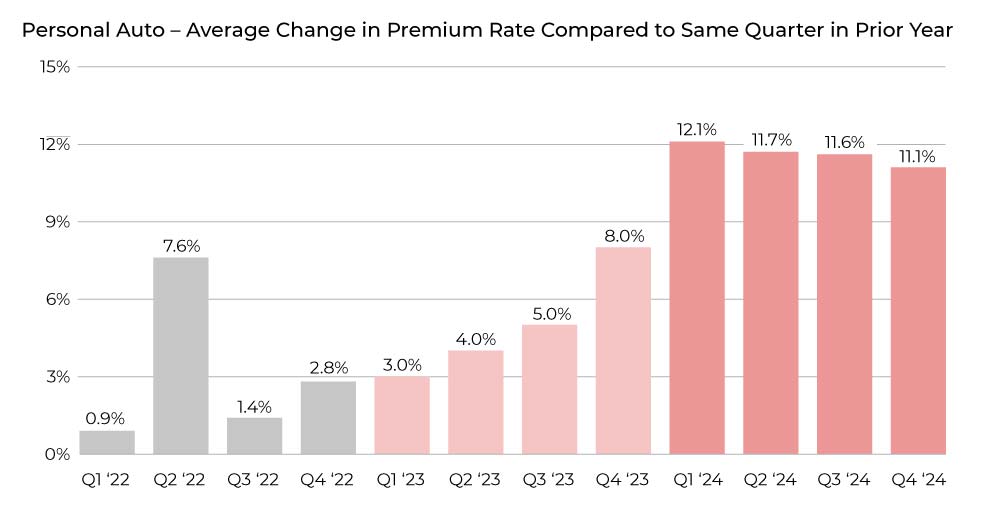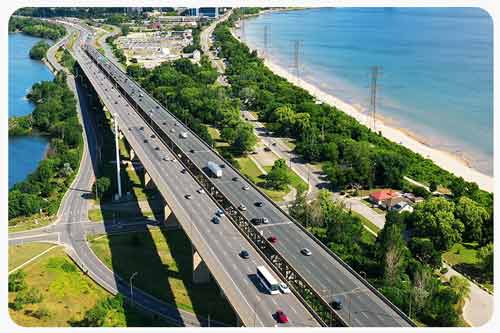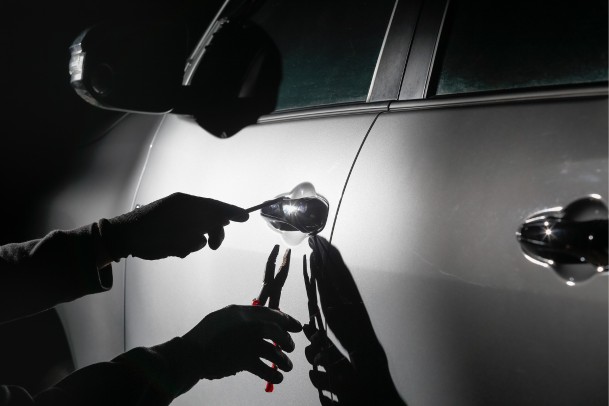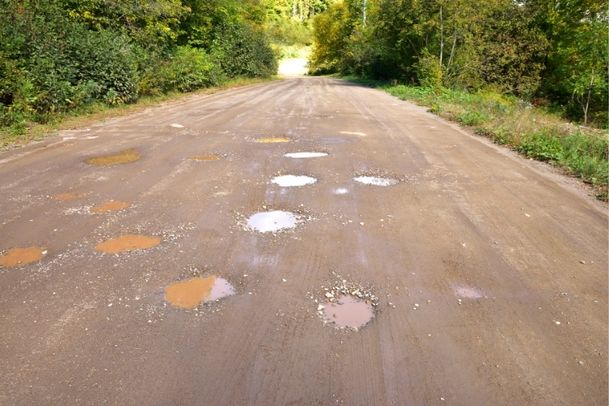Mandatory car insurance in Ontario
![Cars driving on an Ontario highway]()
Auto insurance is mandatory in Ontario. You must have a minimum amount of coverage. Basic policies include third-party liability, accident benefits, and uninsured motorist coverage.
However, basic policies may not be enough to fully cover the costs of an accident, injuries, and lawsuits. Most motorists increase their policy and coverage limits for added protection. Below, we explain the required coverage in detail:
Third-party liability
You must have a minimum of $200,000 in third-party liability insurance (TPL). This covers you in the event you cause damage or injure someone. For example, you cause a collision and damage to city or private property. TPL would protect you in this situation.
You can increase third-party liability coverage limits. Most have at least $1 million in coverage, but you can increase it to $2 million for more protection.
Scenario: You are driving home from work in a rainstorm. The vehicle in front of you suddenly stops, and you are following a little too closely. You hit the brakes, but you hydroplane and rear-end the vehicle in front of you. The accident is your fault. The driver and passenger of the other vehicle were hurt in the crash. They decide to sue you for medical costs and damages.
How third-party liability protects you: This coverage will cover the medical bills of the other drivers, damage to the other vehicle, legal fees, and any damages awarded. You have protection up to your policy limit.
Statutory accident benefits (AB)
You will receive certain medical benefits and other expenses if injured or killed in an auto accident. You can purchase additional accident benefits and change your limits.
Here is the minimum included:
- Medical payments: Up to $65,000 for non-catastrophic injuries or up to $1 million for catastrophic injuries.
- Medical and rehabilitation benefits: Up to $3,500 for minor injuries.
- Caregiver benefits: Up to $250 per week.
- Funeral expenses: Up to $6,000.
- Disability income benefits: $185/week for 104 weeks.
- Death benefits: Minimum of $25,000 to spouse and $10,000 to dependants.
- Income replacement: 70% of gross wages. Maximum of $400 per week.
Learn more about what's covered under statutory accident benefits.
Scenario: You are driving to the grocery store on a Saturday morning. You are going through a busy intersection when another vehicle runs a red light and T-bones your vehicle. You have extensive injuries to your back and shoulder, preventing you from working.
How accident benefits protect you: This coverage provides financial compensation while recovering. You will receive payments to cover physical therapy costs and treatments to help your shoulder and back heal. You will also receive income replacement while you are unable to work. You can also receive compensation for caregivers if required.
NOTE: As outlined in the 2024 Ontario Budget, the Ontario government has proposed making some accident benefits optional. Accident benefits for medical, rehabilitation, and attendant care will remain mandatory, while the rest will become optional. This move would reduce the amount of mandatory coverage and lower premiums.
Direct compensation property damage (DCPD)
Direct compensation property damage is mandatory in the sense that it will be included in your policy unless you choose to remove it. It will be included in your quoted price. But you have the option to remove it from your policy. You have the option to remove DCPD from your policy. DCPD covers damage to your vehicle in a collision where you are not at-fault. For this to take effect, the accident must occur in the province and involve another insured vehicle.
Scenario: You are on your way home from visiting relatives out of town. It's winter, and the road conditions are not ideal. It's snowing, and the roads are slick. The vehicle in the lane beside you loses control and side-swipes you, causing considerable damage to your car. It's no longer drivable and it gets towed to the shop. The other driver is 100% at-fault for the collision.
How DCPD helps: This will cover the costs of repairing your vehicle. You will work with your insurer directly. You’ll also be provided with a loaner car while your vehicle is being repaired in the shop.
As of January 1, 2024, you can opt out of DCPD using OPCF 49. This option was introduced to give you more choices and to lower premiums. But, there are risks involved with removing this coverage. Removing DCPD will not compensate you for vehicle damage, even if you were not at fault.
Uninsured motorist
Also called uninsured automobile coverage, this protects you in the event of injury or death by an uninsured motorist. You have $200,000 in coverage.
This applies if you’re involved in a hit-and-run or the other driver is unidentified.
Scenario: You are involved in a fender bender with another vehicle. The other driver caused the accident. You get out to talk with the other driver and find out they do not have valid insurance. They are an uninsured motorist.
How uninsured motorist coverage protects you: Your insurer will cover the costs to repair your vehicle. You will not be stuck having to pay for repairs out of pocket.
Optional car insurance in Ontario
You can add extra auto insurance coverage that is above the minimum required amount. The most common are comprehensive, collision, all-perils, and specific perils plans. There are also different types of endorsements (riders) that allow you to personalize your policy.
Comprehensive insurance
There are a lot of threats to your vehicle when it’s parked in the driveway, in a parking lot, or on the street. It’s not just when you are driving that you have to consider. Comprehensive insurance protects against non-collision damage. This includes vehicle damage from weather events, theft, vandalism, fire, earthquake, and falling objects. For example, you’ll be covered if a tree falls on your car or if it is scratched in the parking garage. While options, this may be required by auto lenders if you lease your vehicle.
Scenario: Your vehicle is parked in the driveway. Overnight, an intense storm passes through your neighbourhood. Lightning strikes a nearby tree, and a large branch falls on your car, breaking the windshield and causing damage to the roof and hood.
How comprehensive helps: Since this coverage protects you from non-collision damage, your insurer would cover the damage, up to your plan limit. You would have to pay a deductible. But, with comprehensive, your insurance would cover the damage, and you would have to pay for repairs out of pocket.
Collision insurance
Collision insurance (upset coverage) protects against damage from a collision by another vehicle or object. This applies to most crashes where you are fully or partially at fault. For example, you back into another vehicle when backing out of your driveway.
Scenario: You are at the mall. You are backing out of a parking spot, and you hit a light pole. You cause a significant dent in your bumper. It needs to be replaced because your trunk won’t open properly anymore.
How collision helps: This will cover the cost of the damage. Most people assume that standard insurance will cover collision damage. It would if you hadn’t caused the collision. But if you have some level of fault, and do not have collision coverage, you may not be covered.
Specified perils
Specified perils protect against pre-defined risks named in your policy. This can include theft, fire, wind, hail, water, and other types of damage.
If a peril is listed, you have protection. If it is not, you will not be covered. Even though it may cost less than comprehensive insurance, you could open yourself up to greater threat exposure.
Scenario: You head downtown for dinner on a Friday night. You park at a public lot and then head off for your meal. When you return, your vehicle is not where you left it. It’s nowhere to be found. Someone has stolen your car.
How specified perils coverage helps: Luckily, you included theft as one of the covered perils. Your insurance will help cover your vehicle's damage or replacement costs if it's not recovered. If you chose not to include theft, you would not have coverage.
All perils
All perils combine comprehensive and collision. You are covered for all types of risk unless they are explicitly excluded.
This is the most thorough type of plan. You will have peace of mind knowing you are covered for most things. But, if you see an exclusion listed, you are not covered. For example, if earthquakes are listed as an exclusion, you will not be covered for damage to your automobile because of an earthquake.
Scenario: Your 14-year-old teenage son takes your car out for a joyride around the block with some friends. They lose control and drive into a ditch, damaging the car in the process.
How all perils help: This combines collision and comprehensive. It also protects you if someone in your household steals your vehicle. So, you would have coverage for the damage they caused.
Emergency roadside assistance
This service covers you if your vehicle has mechanical issues or breaks down. You can add it to your plan to give you peace of mind, knowing you can get help when you need it most. It is offered as an additional service. Roadside assistance coverage can also be purchased separately from CAA or other providers.
Scenario: You are going down a busy road during rush hour traffic. You hit a pothole when changing lanes and get a flat tire. You pull over to the side of the road and cannot drive your vehicle any further.
How roadside assistance helps: Call the number provided by your insurer for assistance. This service will cover the cost of the tow truck.
Ontario policy change form endorsements or add-ons
There are also optional Ontario Policy Change Forms (OPCF) or endorsements that you can add for optional coverage. You can add one or all of these when you get a quote. The most common OPCF endorsements that people add are:
- OPCF 27: This allows you to drive another person's vehicle and is also known as Legal Liability for Damage to Non-Owned Automobiles.
- OPCF 20: This covers expenses for a rental car if your vehicle is being repaired or replaced after an accident. This is different than rental car insurance.
- OPCF 43: Also called Removing Depreciation Deduction, this endorsement removes depreciation from the value of a claim settlement when a vehicle is a total write-off.
- Accident forgiveness / OPCF 39: Accident forgiveness is sometimes included in a plan. It can also be added as an optional endorsement called OPCF 39, which forgives you for your first at-fault accident.
- OPCF 44: The Family Protection endorsement covers you or a family member with additional protection if you are in an accident with an at-fault driver underinsured or without coverage.
- OPCF 49: This is an agreement not to recover for loss or damage from an automobile collision.










